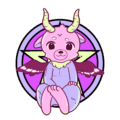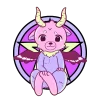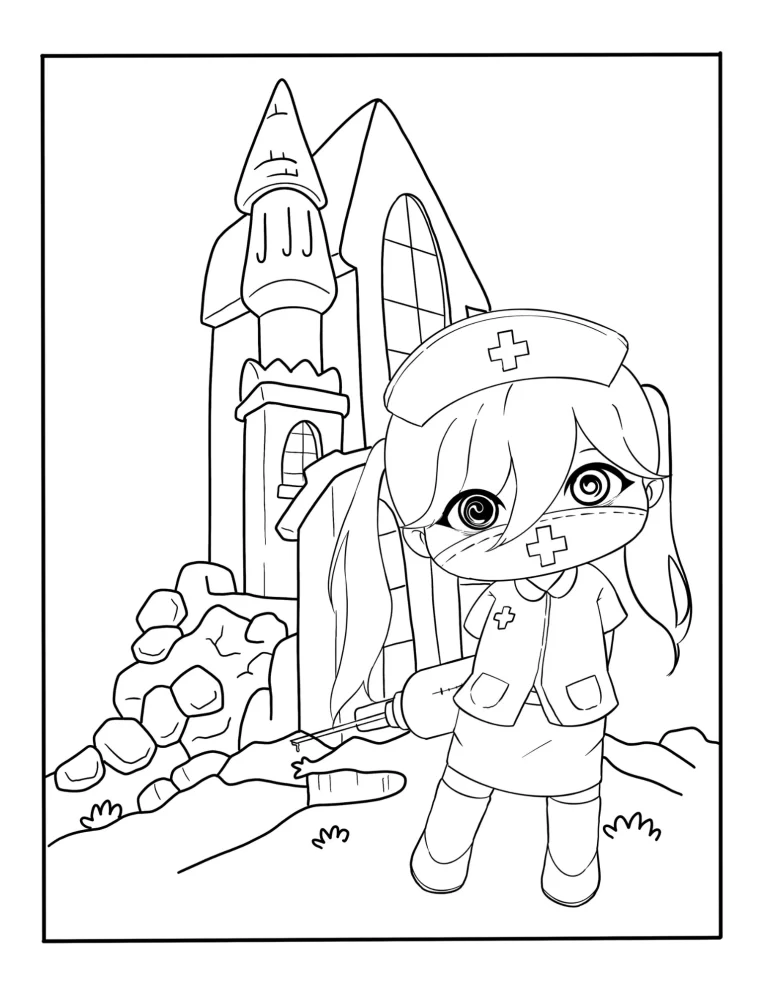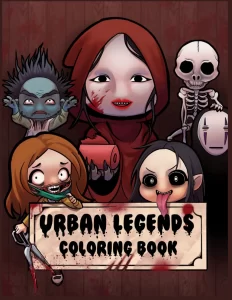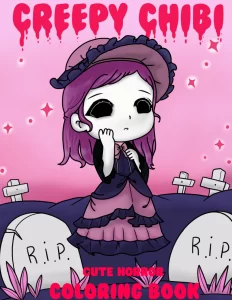Explore the World of Gurokawa, Yami Kawaii, and Other Creepy Cute Aesthetics
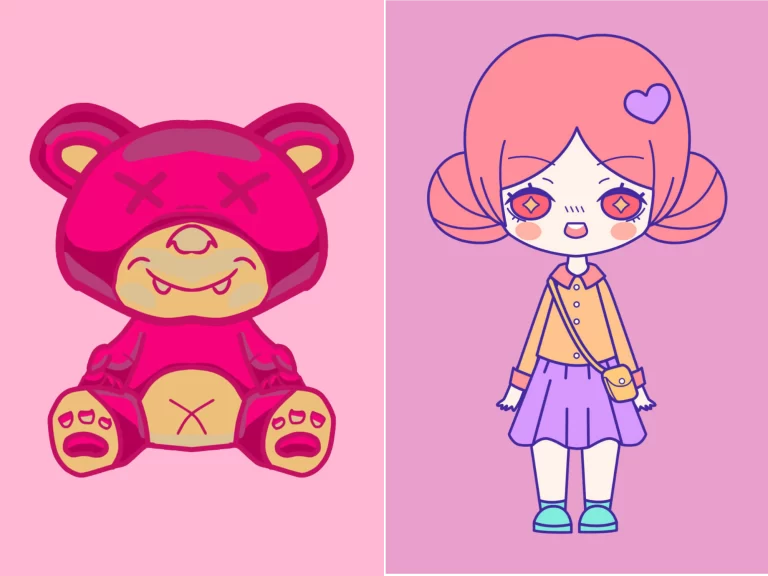

People added new elements to the well-known kawaii style. They introduced dark elements, horror, and even ugliness. This style generates a visual and emotional contrast, combining cuteness with dark motifs.
Creepy cute comes in several variations that are often confused with each other. By reading this article, you’ll be able to tell the difference between styles like Yami Kawaii, Gurokawa, and Kimokawaii. As a bonus, I will show you my coloring pages that may match a particular style. The coloring pages are free to download. Personal use only.
Now, let’s take a closer look at the style known as Yami Kawaii.
Yami Kawaii Art and Menhera Chan


"yami" means both sick and dark
Who Created Yami Kawaii?
Ezaki Bisuko is well-known as the creator of this style. During his studies, Ezaki Bisuko created a character who is now the face of the style: Menhera Chan.
The goal of the story was to change the negative image of mental health issues. It turns those bad feelings, like darkness or sadness, into something cute.
Yami Kawaii and Mental Health
Menhera A Blend Of Many Styles
Menhera-chan’s style is a blend of kawaii styles that are popular in Japanese pop culture. Beside Yami kawaii, other styles that influence Menhera Chan’s character design include:
- Menhera Chan’s style is similar to the clothing worn in Harajuku, a place in Japan known for its fashion. She has colorful hair and many accessories, just like the people in Harajuku.
- Decora: This style involves wearing many decorative accessories. Menhera Chan often wears bows, hair accessories, and ribbons
- Pastel Goth: A kawaii style that combines pastel colors with gothic fashion elements. Menhera Chan uses pastel colors in her design, along with darker themes.
What is the Menhera-chan Story?
Menhera Chan is a cute school girl. One day, she discovers that she can transform and fight evil. Doesn’t sound bad, right? Well, the way she gains her powers is quite disturbing. Let’s also mention that other students bully her at school.
The word ‘Menhera’ is a slang term that combines ‘mental’ and ‘health’. Today, Menhera is a movement centered around mental wellness. Menhera is not a style label like Yami Kawaii!
Common Elements Found In Yami Kawaii
Colors and Style: Round shapes and childlike appearances are still very common. Bright and pastel colors are used to contrast with darker themes.
Hidden Message: It is main focus is to make mental illness a more normal topic to talk about. It portrays negative emotions in a cute or relatable manner.
Popular Elements: Amidst cute and adorable elements, you can find medical items and hidden messages. Syringes, heart monitors, broken toys, pills, bandages, and even weapons – it’s all here.
Expression: Many creators use this style to express their own experiences.
Time For Bonus Coloring Page
Click on the image to dowload the coloring page in PDF file.
This adorable chibi can appear cute, but this big syringe can be a little spooky. Her mouth remains sealed, preventing her from speaking freely. The building in the background resembles an asylum rather than a cozy home…
Enter The World Of Gurokawa


The name gurokawa takes "guro" (グロ) from "grotesque", and "kawa" (カワ) from "kawaii"
Gurokawa is a unique style that challenges traditional notions of cuteness. The Gurokawa story comes from kawaii evolution. The goal is to express a wider range of emotions and experiences through art and fashion.
Gurokawa is not for everyone because its images can be frightening to some people. It’s a small, unique group that’s loved by people who like unusual fashion and art.
Gloomy Bear What Is It?
Those who know Gurokawaii know Gloomy Bear. This teddy bear is so cute and pink! Is it worth hugging him? Nothing bad should happen, right?
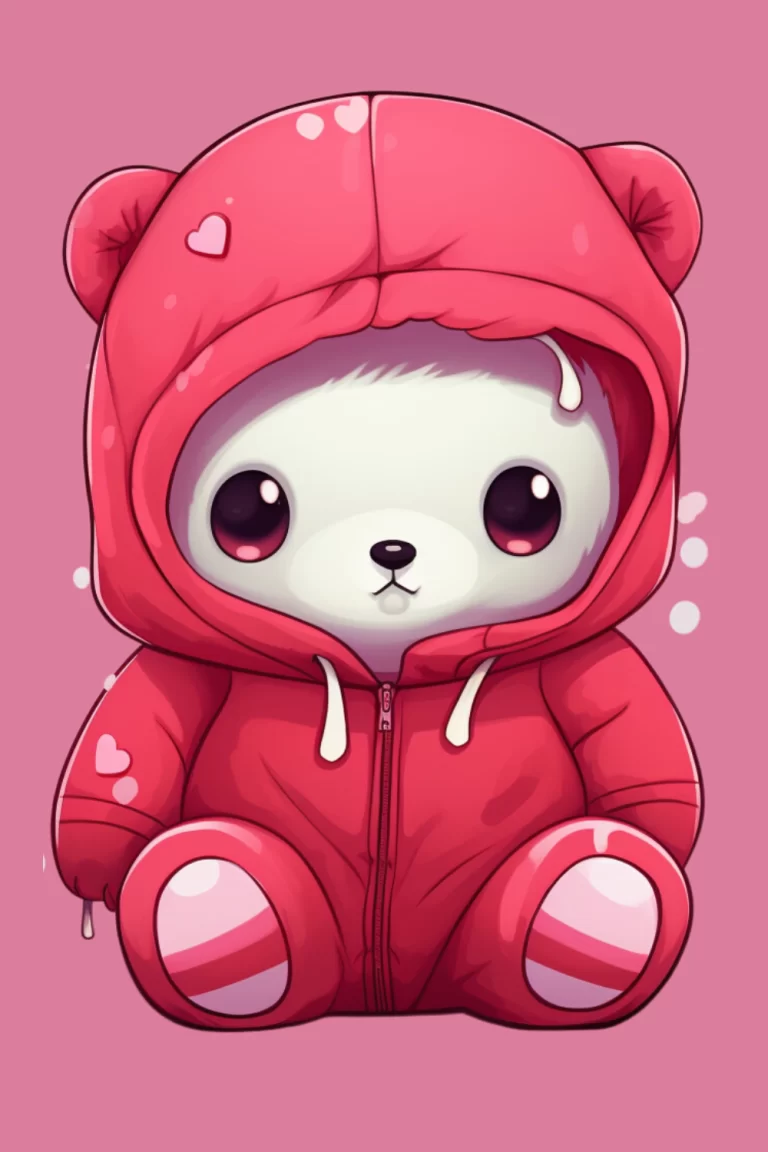

Do you want to hug this bear? Better be careful.
My gloomy bear inspiration.
Popular Artist
Bonus Coloring Page
Click on the image to dowload the coloring page in PDF file.
Eyeballs as motifs or accessories are very popular in Gurokawa. I added this small element to this cute chibi.
Kimo Kawaii: Cute and Gross At The Same Time
Kimo-kawaii represents an interesting variation of kawaii culture. Comparing opposite traits like sweetness and darkness doesn’t seem very surprising to me. But what about combining kawaii and… disgust?
The Japanese term for this trend is “kimo-kawaii”, made up of the words “kimochiwarui” (disgusting) and “kawaii” (cute). As the name suggests, “kimo-kawaii” items and mascots are disturbing yet oddly charming.


Kimo kawaii means "disgusting cute" but can also be translated as
"creepy cute." "Kimo" comes from the Japanese term "kimochi warui,"
which means disgusting.
Kimo kawaii means "disgusting cute" but can also be translated as "creepy cute." "Kimo" comes from the Japanese term "kimochi warui," which means disgusting.
It might seem like it’s impossible to blend such concepts. How can “gross” pass as “cute”? Nevertheless, the style has gained some popularity. In this style, you’ll find strange creatures with the outside skins of mushrooms, peaches, and plants. Facial expression can also be very unconventional.
This style can be interpreted in many ways and remains a part of the broader landscape of fashion and alternative culture in Japan.
Kobito Dukan Bizarre Dwarf
Kobitos has expanded their merchandise to include DVDs, figurines, umbrellas, and plushes. There are many types, but the most well-known is Hiding Peach Bottom Kobito.
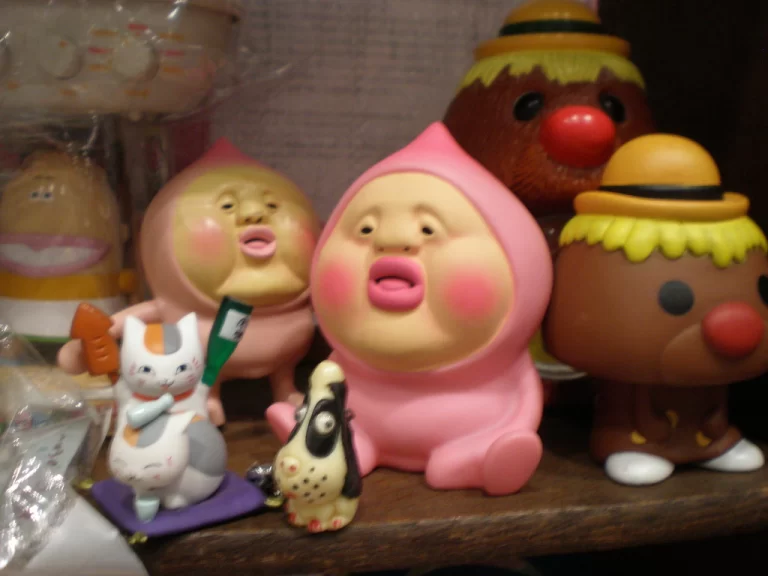

Hiding Peach Bottom Kobitos get their name from their peach-shaped rear end, which they use to blend in with their favorite fruit.
Other popular characters include.
Vibes Dapple Kobitos
Vibes Dapple Kobitos wander through parks and yards looking for tasty herbs to eat. They can be quite scary when they become angry.
Big Dapple Leaf Kobitos
Little Flower Head Kobitos
Little Flower Head Kobitos are predators of small insects, reptiles, and mice. They hunt in small groups.
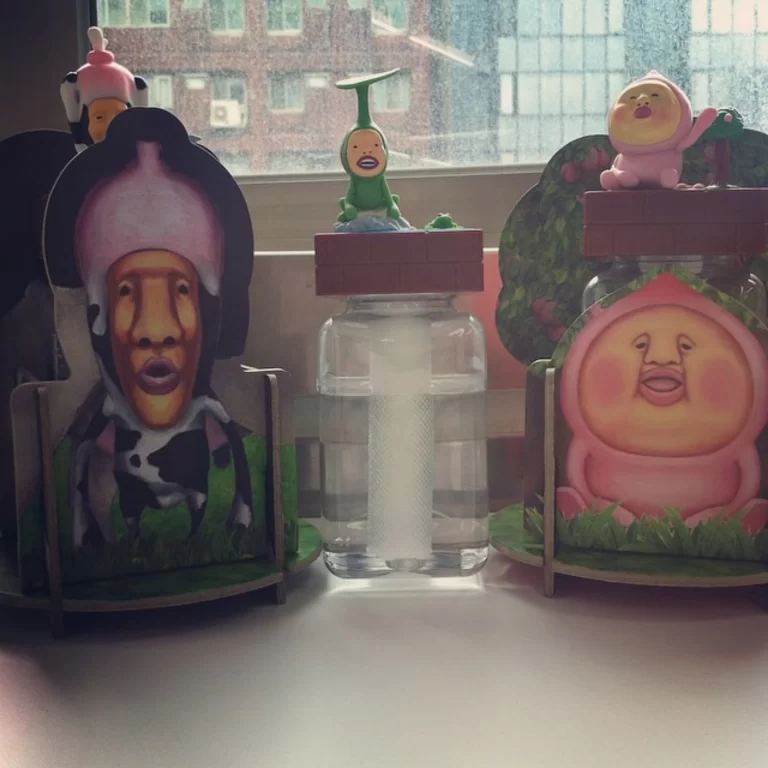

Free Coloring Page
Click on the image to dowload the coloring page in PDF file.
I believe that this illustration is a good presentation of the kimokawaii.
What Is Pastel Goth?
Pastel goth combines the traditional goth aesthetic with colorful and kawaii elements. Currently, many creators pair pastel goth with creepy cute. even if the design leans closer to Yami Kawaii or Gurokawa.
Pastel Goth And Creepy Cute Popular Buzz Words
Pastel Goth And Creepy Cute Coloring Books
A really good example is the work of the well-known author Leriza May. Pastel goth or creepy-cute styles are evident in the titles of her coloring books, which often feature a mix of different aesthetics. Furthermore, her coloring books are top-notch.
The new Leriza May Book is also a combination of several styles.
Are There Different Types Of Kawaii?
I still haven’t described many kawaii styles. if you want to explore other styles (not only creepy cute). I recommend aesthetics wiki. This is a great description of kawaii styles in one place.
Summary
There’s no need to argue about which genre a particular work belongs to. Genre disputes and wars don’t do anything good. But it’s great to remember the definitions of genres and their history for a simple reason. Behind every style or genre,there is an effort by artists. It’s essential to remember the people who blaze new trails and create something new.
Can you now distinguish the different varieties of creepy-cute? Do my coloring pages reflect a given style well? Can we expect more kawaii varieties in the future?
Disclaimer
This site contains product affiliate links. We may receive a commission if you make a purchase after clicking on one of these links.
Do you like it? You can have more kawaii coloring pages right now!
FAQ
Most frequent questions and answers
3 coloring pages in pdf file
Print at regular letter size 8.5″ x 11″ (21.59 x 27.94 cm) for best results.
All coloring pages are for PERSONAL USE ONLY. You may share your colored drawing on social media.
While they share some similarities, there are notable differences between the two Gurokawa focus on gore and horror. Yami Kawaii, also known as “Sick Cute,” primarily centers around themes related to mental health.
As time passed and society changed, the kawaii culture began to evolve and take on various forms. Creepy cute is a response to these changes. This style generates a visual and emotional contrast, combining cuteness with dark motifs.
